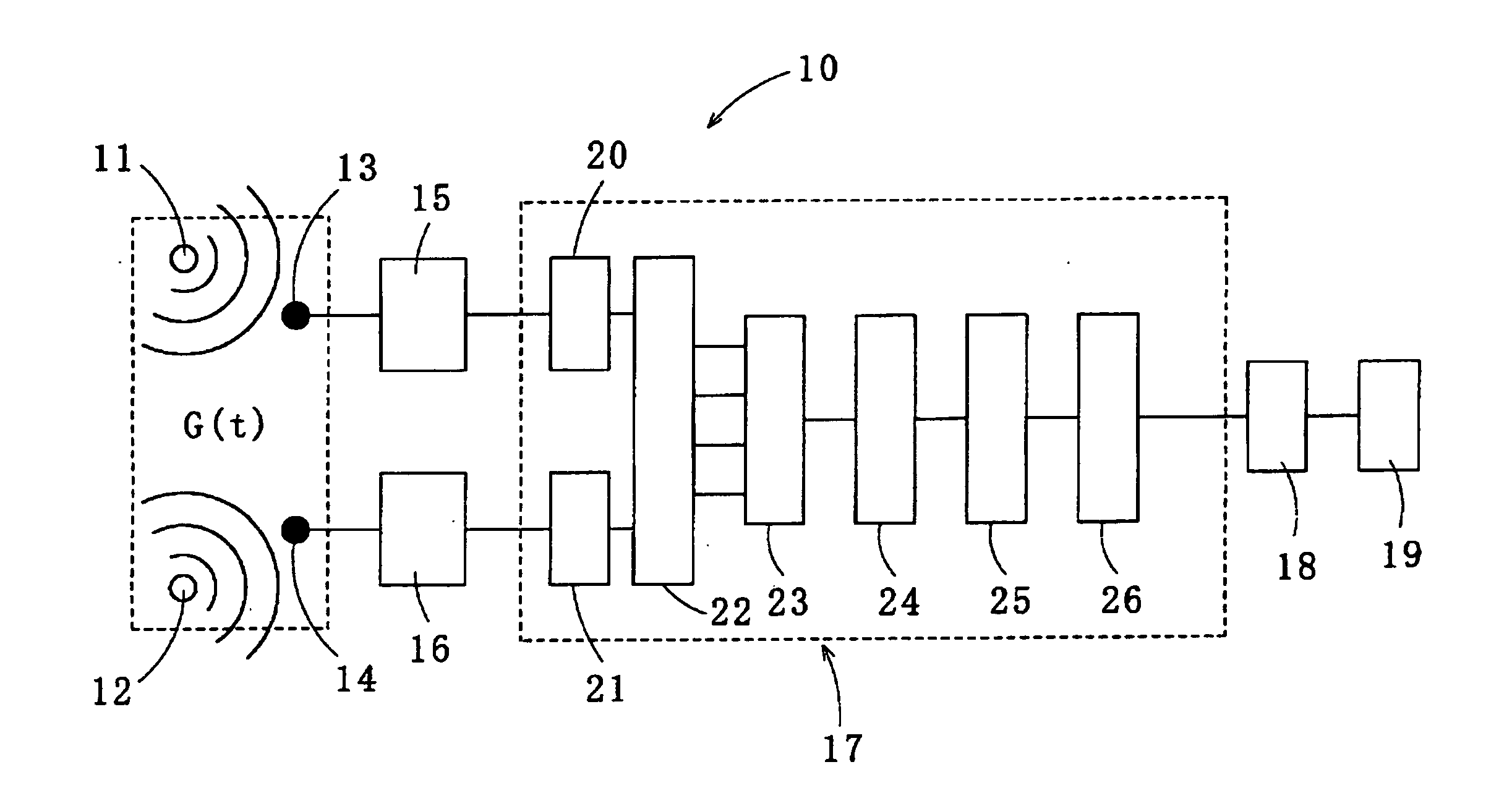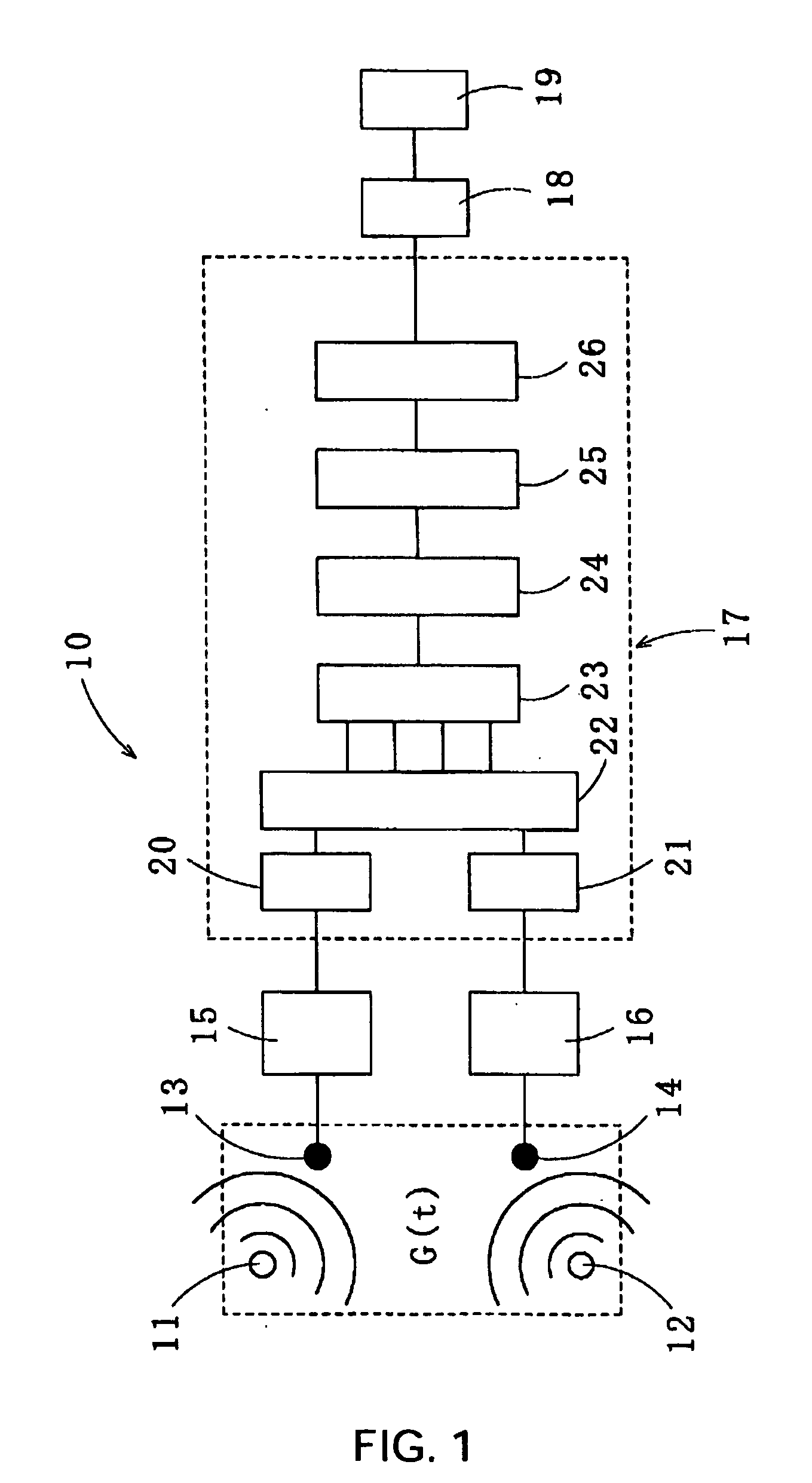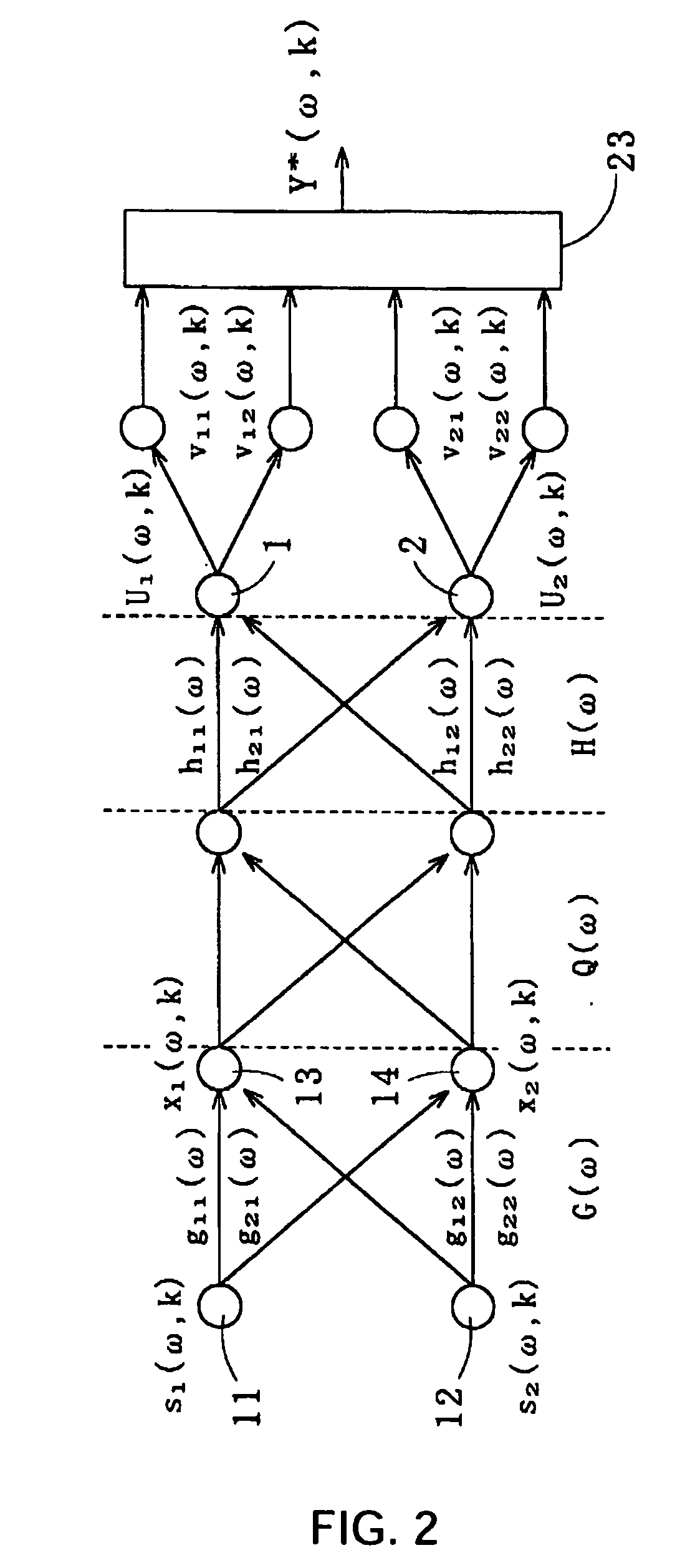Method for recovering target speech based on speech segment detection under a stationary noise
a target speech and stationary noise technology, applied in the field of target speech recovery based on speech segment detection under a stationary noise, can solve the problems of difficult to achieve a desirable recognition rate in a household environment or office, and its separation ability greatly degrades under real-life, and achieves the effect of minimizing the residual noise in the recovered target speech
- Summary
- Abstract
- Description
- Claims
- Application Information
AI Technical Summary
Benefits of technology
Problems solved by technology
Method used
Image
Examples
example 1
(A) EXAMPLE 1
[0095] Experiments were conducted in a virtual room with 10 m length, 10 m width, and 10 m height. Microphones 1 and 2 and sound sources 1 and 2 were placed in the room as in the FIG. 11. The mixed signals received at the microphones 1 and 2 were analyzed by use of the FastICA, and a noise was removed to recover the target speech. The detection accuracy of the speech segment was evaluated.
[0096] The distance between the microphones 1 and 2 was 0.5 m; the distance between the two sound sources 1 and 2 was 0.5 m; the microphones were placed 1 m above the floor level; the two sound sources were placed 0.5 m above the floor level; the distance between the microphone 1 and the sound source 1 was 0.5 m; and the distance between the microphone 2 and the sound source 2 was 0.5 m. The FastICA was carried out by employing the method described in “Permutation Correction and Speech Extraction Based on Split Spectrum through Fast ICA” by H. Gotanda, K. Nobu, T. Koya, K Kaneda, and ...
example 2
(B) EXAMPLE 2
[0099] At the sound source 2, five different non-stationary noises (office, restaurant, classical, station, and street) selected from NTT Noise Database (Ambient Noise Database for Telephonometry, NTT Advanced Technology Inc., 1996) were emitted. Experiments were conducted with the same conditions as in Example 1.
[0100] The results showed that the start point of the speech segment determined according to the present method was −2.36 msec (with a standard deviation of 14.12 msec) with respect to the start point determined by the visual inspection; and the end point of the speech segment determined according to the present method was −13.40 msec (with a standard deviation of 44.12 msec) with respect to the end point determined by the visual inspection. Therefore, the present method is capable of detecting the speech segment with reasonable accuracy, functioning almost as well as the visual inspection even for the case of a non-stationary noise.
[0101] While the invention...
PUM
 Login to View More
Login to View More Abstract
Description
Claims
Application Information
 Login to View More
Login to View More - R&D
- Intellectual Property
- Life Sciences
- Materials
- Tech Scout
- Unparalleled Data Quality
- Higher Quality Content
- 60% Fewer Hallucinations
Browse by: Latest US Patents, China's latest patents, Technical Efficacy Thesaurus, Application Domain, Technology Topic, Popular Technical Reports.
© 2025 PatSnap. All rights reserved.Legal|Privacy policy|Modern Slavery Act Transparency Statement|Sitemap|About US| Contact US: help@patsnap.com



